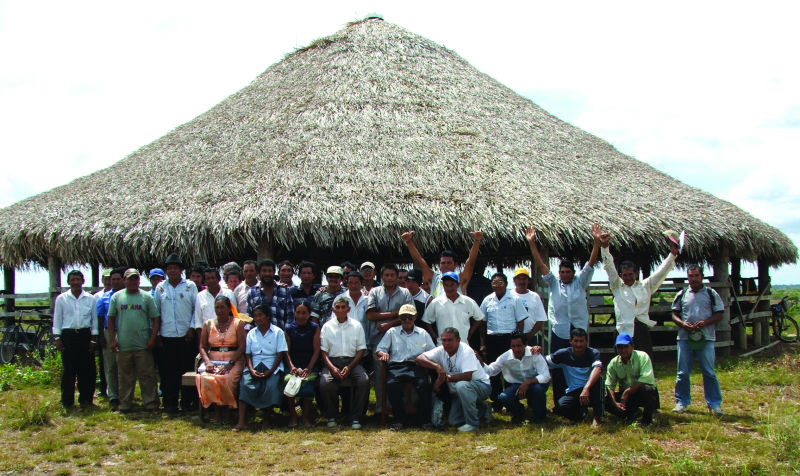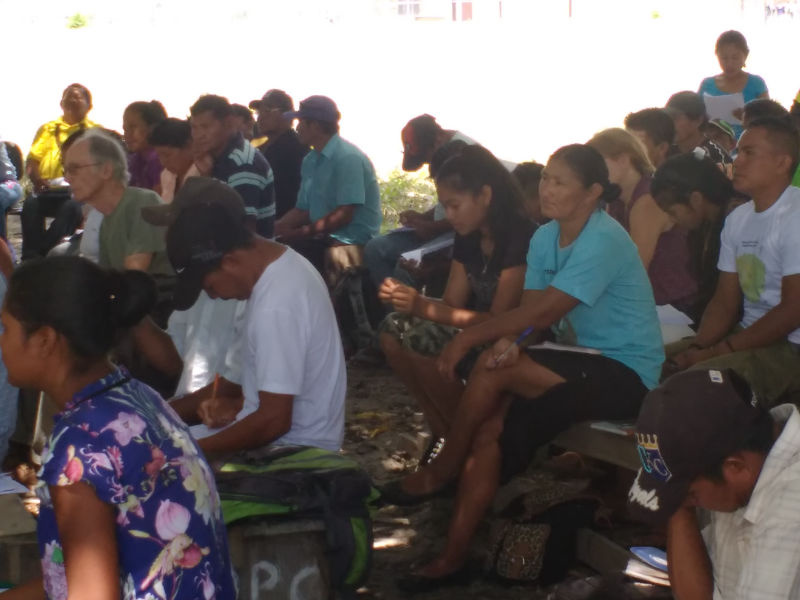(Potaruunaawa)
The village got its name from a giant stingray, that once lived in a deep pool found in Sawariwau river. The was a sensitive site with a spirit keeper but the early settlers had to close it down and they even had to kill the giant stingray (Potarudu). The village was also called Ambrose in the early 19th century but it was just named after the first Toshao of the village. The village is located in South Central Rupununi, region nine.

The first places where people settled were at Makoro Toon naaw also known as “Warouna” and at Iripi wa’o naawa left bank. The first settlers were wapicha nao and the atorad nao. They moved from the main settlement, which is now called Potarinau, in the early 19 centuries because of religion and schools. These are the names of the elders, Tamash, Kazao, Wajio,Uzie, paaboroo and later Ambrose and Cybia.
POPULATION
Potarinau Village population for 2017 is six hundred sixty-three (663) persons, most persons are Wapichaunas and some are Macushi.
LAND RIGHTS
Potarinau Village has a land title which covers a portion of our community lands, but a large part of our customary land remains with out title and is insecure. The Village Council has submitted a formal application for extension of our land title in accordance with the Amerindian act 2006. The application is the subject of formal talks with the Government of Guyana, which are ongoing in 2017.
TOSHAOS OF POTARINAU
1. Ambrose
2. Kinchin
3. Paul S.
4. Austin Isaacs
5. Sigfred Albert
6. Paulinus Albert
SATELLITE COMMUNITIES
Potarinau Village has three satellite communities namely: Shiriri, Baitoon and Katuur. Each community is governed by a senior councillor and at least four other Councillors. Each holds their own public meetings. They submit their own proposals and receiving their own grants.
Shiriri is the south of Potarinau village approximately 10 miles, Katuur is to the south west direction, with approximately thirteen miles and Baitoon is to the west approximately 12 miles.
MAIN ECOSYSTEM AND RESOURCES AREAS
Potarinau lands are made up of open savannah with rolling hills and mountains, bush islands, creeks lakes, swamps and different types of wild animals. Potarinau depends on their bush islands to farming e.g. Pokawaad Taawa. Hunting and gathering craft and medicines at Kuesad (Koshada) Shiriri mountain.
ECONOMY AND LAND USE
All villagers are subsistence farmers. They cultivate cassava, peanuts, bananas and corn. Most families rare domestic animals and as such are the local ranchers. They rear cattle, sheep, horses, pigs and chickens. Their main cash crop is peanuts and most of the time they have old farine in to Lethem. They also sometimes sell cattle and beef in and around the village and into Lethem.
SERVICES AND FACILITIES
A nursery school, a health post, a hot meal building which serves to provide a balance diet meal for the school children.
A peanut butter factory which provides jobs for some people from the village and neighboring villages.it provides peanut butter to neighboring schools.
Communication is by two radio sets, one installed at the Toshao’s office and one at health post.
Two churches, one catholic church and one seventh day Adventist.
COMMUNITY ORGANIZATIONS
1. Sports club: Potari sports club not registered but participate at heritage village competition: football.
2. Community Policing group.
3. Parents Teachers Friends Association both schools.
4. Hot meal and peanut butter management board.
5. Church groups.
6. Disaster relief committee.
COMMUNITY PROJECTS
Improving cattle stock rearing (ranching).
FUTURE PLANS
1. Repairing the benab.
2. Bridging kapato waó and upgrading Potarinao main road.
3. Developing a Disaster relief committee.
4. Village farm.
5. Digging of wells at strategic locations for cluster families.
6. Water harvesting.
WILDLIFE INTEREST AND TOURIST ATTRACTION
Tourism at kunada. Red siskin area, and other wild life, shiriri mountain, red siskin area-Jaguar, giant anteater etc. Mini radio for Easter. Bakawada Taawa-the main jaguar area.
CARING FOR OUR RESOURCES
Caring for our customary law and village rules keeping up and abiding with our inter community agreement on the use of our resources. Documenting our wild animals and birds. Updating our documents.

Participants at the South Rupununi District Council Meeting held in Potarinau Village from October 3-5, 2018